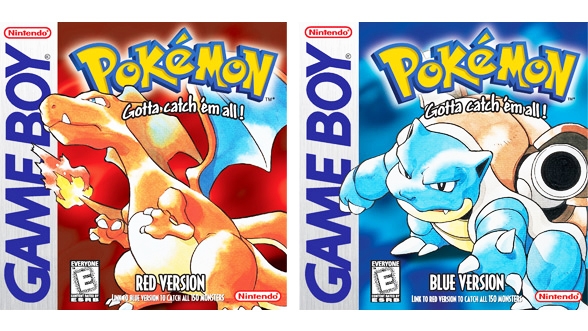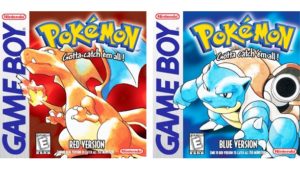

The ‘Pokémon’ games have a unique gimmick where certain monsters are kept exclusive to either ‘Blue Version’ or ‘Red Version’. This feature was implemented to encourage trading creatures with friends in order to complete the in-game encyclopedia.
Grant Stoner | Staff Writer
10/26/17
I have always been a fan of the Japanese role-playing game genre. Having the capability to customize my party’s move-sets and items, while tactically planning my next action in a turn-based battle, is like an exhilarating game of chess. Yet, my journeys tend to become monotonous, as most titles only feature a very limited roster of characters. Fortunately, with Pokémon: Blue Version, party combinations are endless and create limitless possibilities for adventures.
Developed by Game Freak, Pokémon: Red Version and Pokémon: Blue Version tasks players with exploring the mythical Kanto region. While children traversing the untamed land, as well as catching insanely powerful monsters in tiny red-and-white balls, may seem a little far-fetched, the games provide incredibly nuanced battle and capture mechanics.
The story revolves around a 10-year-old Pokémon prodigy (yourself), who is given the tremendous task of documenting and capturing each “pocket monster.” Throughout his expeditions into forests, sprawling cities, dark caves and aquatic routes, Blue, as I affectionately named the protagonist, battles other Pokémon trainers on a quest to become the very best.
In order to successfully complete your mission, Red and Blue requires players to battle mighty trainers known as Gym Leaders. Similar to traditional boss fights, Gym Leaders will fight with a variety of common and exotic Pokémon, forcing trainers to bring a plethora of healing items, as well as a full and powerful team. Entering the second gym with only two monsters quickly turned into a terrible ordeal, and I learned to fill my roster, even if I only used that Pokémon for one battle.
Speaking of frightening beasts, 150 creatures roam the landscape, allowing for Pokémon trainers to fashion unique teams out of six of the creatures. To coincide with the large amount of party options, each Pokémon is labeled as either one or two Types, requiring players to learn their respective strengths and weaknesses. With 15 types, I consistently found myself utilizing my Water-based Squirtle to defeat Fire and Rock monsters, yet I remembered to swap the turtle when I encountered an Electric- or Grass-type. At the end of the game, my team of six Pokémon were able to successfully cover each one of their partner’s’ strengths and weaknesses.
Following a common RPG trope, Pokémon gain experience through battling, thus allowing them to level up and acquire new attacks. Moves that either boost or lower stats, damage enemies with physical or special attributes or apply crippling ailments create interesting battle dynamics. I absolutely adored strategizing which attack would best fit the current situation. However, Pokémon can only remember four moves at a time, forcing trainers to forgo learning new attacks if they wish to keep their current moveset. At first, I became frustrated with this mechanic, but soon realized that with six Pokémon on a team, each with four moves, it allowed me to fill in the gaps with my other monsters if I felt it necessary.
Coinciding with leveling, comes the capability for most Pokémon to undergo an evolution. After reaching a unique criteria, certain creatures will transform, changing their physical appearance, boosting their stats and sometimes even sport a new type. Watching as my adorable Squirtle mutate into a behemoth tortoise with two massive hydro-cannons attached to its shell was exhilarating. Forget cute Pokémon. Beasts like my Blastoise were ready to tackle any challenge.
Red and Blue introduced a revolutionary multiplayer feature, previously unknown to the RPG style. By connecting link cables to two Game Boys, players can battle one another and even trade Pokémon, allowing friends to own all 150 of the monsters. To my surprise, certain Pokémon can only activate their evolution once they have been traded to a friend. I won’t spoil anything, but be sure to trade as many monsters with your friends as possible.
Finally, Red and Blue brought an interesting aspect to the genre: portability. No longer am I confined to my 20-inch RCA in my bedroom. I can simply bring my Game Boy, and my respective Pokémon cartridge, wherever I go, which is especially nice since I am frequently hospitalized. Now, instead of mindlessly watching television, I can escape into the Kanto region, allowing me to ignore the pains and stress related to my numerous hospital visits.
Pokémon: Red Version and Pokémon: Blue Version have quickly become two of my favorite RPGs. I loved discovering unique team combinations, capturing all 150 Pokémon and even virtually medicating myself when needles, doctors and nurses became too much to bear. I cannot recommend this game enough, and am excited to see where Game Freak takes the Pokémon name in the future.


